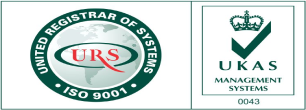
PLM, or Product Lifecycle Management, is a software system used to manage the entire lifecycle of a product, from design and development to production, maintenance, and disposal. There are several ways in which PLM can be useful for an engineering team:
- Design Collaboration: PLM can be used to facilitate collaboration between different teams involved in product design. Engineers, designers, and other stakeholders can work together in a centralized system, sharing data and feedback in real-time.
- Version Control: PLM provides version control, which ensures that all changes to the product design are tracked, documented, and accessible to the entire team. This feature helps engineers to keep track of different versions of designs and avoids confusion and errors.
- Bill of Materials (BOM) Management: PLM helps engineers manage BOMs by providing real-time access to a centralized database. This feature allows the engineering team to keep track of all components and sub-assemblies, including their properties and relationships.
- Change Management: PLM provides a framework for managing changes to the product design. This feature helps the engineering team to track all changes and ensures that all stakeholders are notified and involved in the decision-making process.
- Quality Control: PLM helps engineers to manage product quality by providing a centralized database for tracking defects, issues, and feedback. This feature helps the engineering team to identify and resolve issues quickly, reducing the time to market.
- Regulatory Compliance: PLM provides tools for managing regulatory compliance, including tracking compliance requirements, documenting compliance efforts, and generating compliance reports. This feature is particularly useful for engineering teams in regulated industries, such as medical devices and aerospace.
Overall, PLM is a valuable tool for engineering teams, providing a centralized system for managing all aspects of the product lifecycle. It helps the engineering team to collaborate, streamline processes, reduce errors, and improve product quality, ultimately leading to faster time-to-market and increased profitability.


